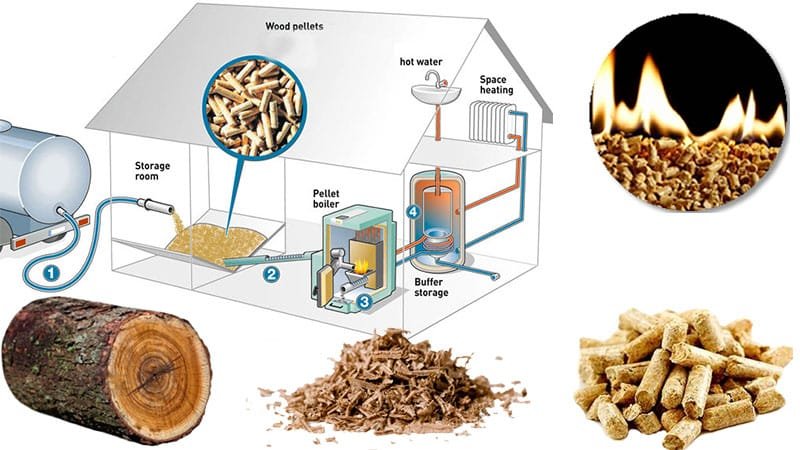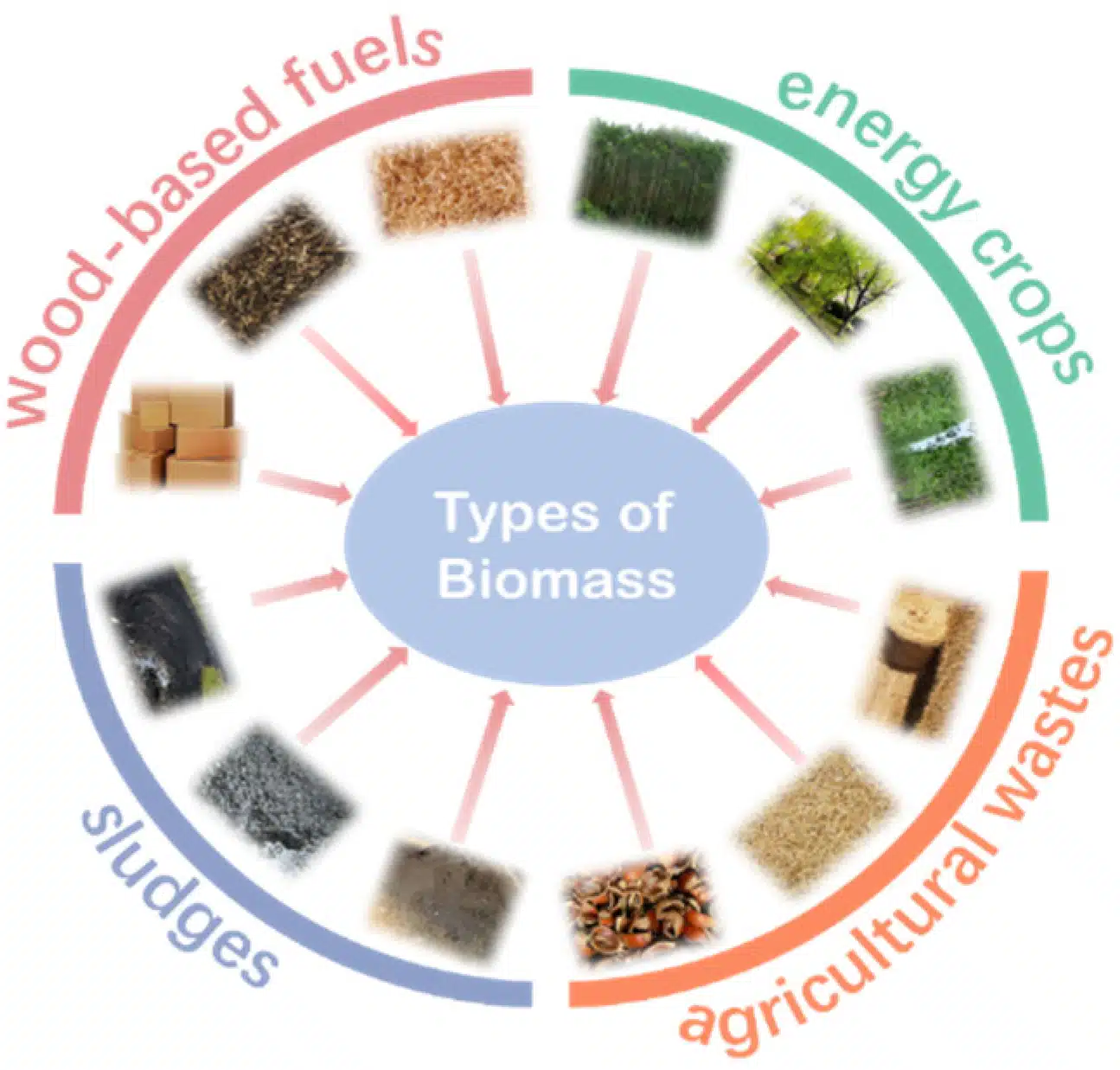In recent years, there has been a growing interest in sustainable and eco-friendly heating solutions, and pellet and biomass heating have emerged as viable alternatives. As individuals and businesses seek more environmentally conscious options, the question arises: Is pellet and biomass heating still worth it in today’s energy landscape?
Understanding Pellet and Biomass Heating
Pellet and biomass heating involve the use of organic materials, such as wood pellets, agricultural residues, or other biological matter, to generate heat. These renewable energy sources have gained popularity for their low environmental impact and potential cost savings over traditional heating methods.
Environmental Benefits of Pellet and Biomass Heating

The increasing concern about climate change has led many to explore cleaner energy alternatives. it contribute to sustainability by utilizing organic materials that can be replenished, reducing the reliance on fossil fuels. Throughout this article, we will delve into the environmental advantages of adopting pellet and biomass heating systems.
Cost Considerations: Are Pellet and Biomass Heating Systems Economical?
While the environmental benefits are clear, the economic aspect is equally important. To determine if pellet and biomass heating are still worth it, we must evaluate the costs involved, including the initial investment, operational expenses, and potential long-term savings. Let’s explore the financial considerations associated with these heating methods.
Technological Advancements in Pellet and Biomass Heating Systems
As technology continues to advance, so do the capabilities of pellet and biomass heating systems. New innovations have improved efficiency, reduced emissions, and enhanced overall performance. This section will discuss the latest technological developments that make pellet and biomass heating an attractive option in the modern energy landscape.
Government Incentives and Support
Government initiatives and incentives play a crucial role in promoting renewable energy adoption. In many regions, there are programs that encourage the installation of pellet and biomass heating systems through tax credits, grants, and subsidies. Understanding the available incentives is essential for individuals and businesses considering the switch to these eco-friendly heating solutions.
Case Studies: Real-world Examples of Pellet and Biomass Heating Success Stories
To provide a comprehensive perspective, this section will showcase real-world examples of individuals or organizations that have successfully implemented pellet and biomass heating systems. Examining these case studies can offer valuable insights into the practicality and benefits of adopting such solutions.
Maintenance and Longevity of Pellet and Biomass Heating Systems
Like any heating system, pellet and biomass heaters require regular maintenance to ensure optimal performance and longevity. This section will discuss the necessary upkeep, potential challenges, and tips for maximizing the lifespan of these systems.
Energy Efficiency and Performance

One crucial aspect to consider when evaluating the worthiness of pellet and biomass heating is their energy efficiency and overall performance. Advances in technology have not only made these systems more eco-friendly but also more efficient in converting biomass into heat. This section will explore the energy efficiency ratings of pellet and biomass heating systems, highlighting their ability to provide consistent and reliable warmth.
Regional Suitability and Availability of Biomass Resources
The suitability of pellet and biomass heating may vary depending on geographic locations and the availability of biomass resources. Different regions may have distinct climates and access to various types of organic materials. Discussing the regional aspects of pellet and biomass heating ensures that readers understand how these factors can influence the practicality and effectiveness of these systems in their specific locations.
Carbon Footprint Comparison
To further emphasize the environmental benefits, it’s essential to compare the carbon footprints of pellet and biomass heating with conventional heating methods. This section will provide a detailed analysis of how these renewable energy sources contribute to reducing greenhouse gas emissions, helping readers grasp the positive impact on the environment.
Market Trends and Future Projections
Examining current market trends and forecasting the future of pellet and biomass heating can provide valuable insights into their sustained viability. This section will delve into market dynamics, such as the demand for renewable energy solutions, technological advancements, and potential regulatory changes that may influence the future landscape of pellet and biomass heating.
Community and Social Impact
Beyond individual considerations, the community and social impact of adopting pellet and biomass heating is worth exploring. Discussing how these systems can contribute to local economies, create jobs, and foster a sense of environmental responsibility within communities adds a social dimension to the decision-making process for individuals and businesses.
Integration with Other Renewable Energy Sources
In the pursuit of a comprehensive approach to sustainable living, many individuals and businesses explore the integration of multiple renewable energy sources. This section will explore how pellet and biomass heating can be seamlessly integrated with other green technologies, such as solar or wind power, to create a holistic and efficient energy system.
User Testimonials and Reviews
Including user testimonials and reviews from individuals who have adopted pellet and biomass heating provides a real-world perspective on the practicality and satisfaction levels associated with these systems. Authentic experiences from users can serve as powerful endorsements and guide others in making informed decisions about embracing pellet and biomass heating.
Resilience and Independence
One often overlooked aspect of pellet and biomass heating is the potential for increased resilience and independence. In times of power outages or disruptions in the conventional energy supply chain, pellet and biomass heating systems can serve as reliable alternatives. This section will explore how these systems provide a degree of energy independence, especially in rural or off-grid settings, contributing to a more resilient and self-sufficient energy infrastructure.
Research and Development in Biomass Technologies
The field of biomass technologies is continually evolving, with ongoing research and development efforts aimed at enhancing efficiency, reducing costs, and expanding the range of biomass sources. This section will delve into the latest research initiatives and innovations in biomass heating, providing readers with insights into the exciting developments that may further improve the viability and appeal of these systems in the near future.
Health and Indoor Air Quality
Unlike some traditional heating methods, pellet and biomass heating can positively impact indoor air quality. This section will explore how these systems produce lower emissions and contribute to a healthier indoor environment. Understanding the potential health benefits associated with pellet and biomass heating adds another dimension to the overall assessment of their worthiness.
Regulatory Compliance and Standards
For individuals and businesses considering the adoption of pellet and biomass heating, understanding regulatory compliance and adherence to standards is crucial. This section will outline the regulatory landscape, certifications, and industry standards that govern the installation and operation of pellet and biomass heating systems. Ensuring compliance helps readers make informed decisions and avoid potential pitfalls associated with non-compliance.
Versatility in Application
Both systems are versatile and can be applied in various settings, including residential, commercial, and industrial. This section will discuss the adaptability of these systems to different environments, exploring how they can meet the unique heating needs of diverse spaces. Highlighting the versatility of pellete and biomass heating expands their appeal to a broader audience.
Impact on Land Use and Biodiversity
Examining the impact of pellet and biomass heating on land use and biodiversity is essential for a holistic assessment of their environmental footprint. This section will explore sustainable practices in biomass sourcing, emphasizing responsible land management to ensure minimal disruption to ecosystems. Understanding the conscientious sourcing of biomass materials contributes to a more comprehensive evaluation of the ecological sustainability.
Educational Initiatives and Awareness
Promoting awareness and education about the benefits and practicalities of pellet and biomass heating is crucial for widespread adoption. This section will discuss educational initiatives, training programs, and resources available to individuals and professionals interested in understanding and implementing pellet and biomass heating systems.
Incorporating these additional points into the blog post will provide. Readers with a more comprehensive understanding of the various facets associated with pellet and biomass heating. This nuanced exploration ensures that the article not only serves as a guide for decision-making but also contributes to a deeper appreciation of the broader implications and potential of these sustainable heating solutions.
Conclusion
In conclusion, the question of whether pellet and biomass heating is still worth it depends on various factors, including environmental concerns, economic considerations, technological advancements, government support, and real-world success stories. By exploring these aspects in detail, individuals and businesses can make informed decisions about adopting pellet and biomass heating as a sustainable and cost-effective solution for their heating needs.
Read more article! visit here



